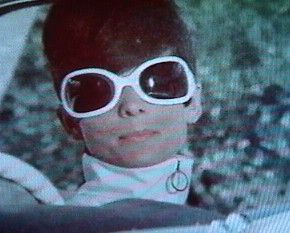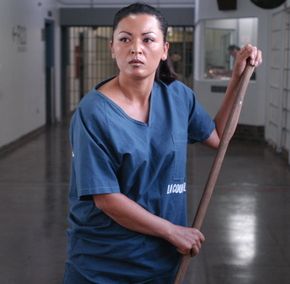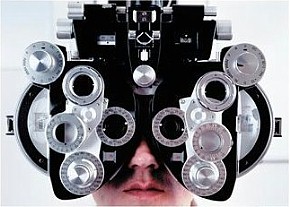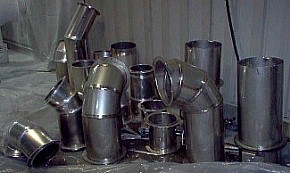2008.08.10 09:35
Adam (sans Eve) in the Garden of Satire
noctilucent, you may not know it, but amateur photography was quite vogue in the 1970s.
2008.08.09 07:46
Adam (sans Eve) in the Garden of Satire
who knew?
A rich and storied past surrounds the Mansfield Hotel, located on famed Club Row, one of the most prestigious and history laden blocks in New York City.
Prior to the Mansfield’s construction in 1903, an orphanage occupied the same real estate until 1867, followed by a three-story brick stable that was built to service the opulent mansions along Fifth Avenue owned by the era’s social “elite”, including notables such as the Vanderbilts, Goelets, Whitneys, Goulds and the Mills.
Then in 1890, one of the most celebrated Architects of the era, James Renwick, was retained to design the Mansfield Hotel. His masterful works include Saint Patrick’s Cathedral, The New York Public Library and St. Bartholomew’s Church, as well as many other historic buildings throughout the city.
Constructed in the popular Beaux Arts style, and influenced by neoclassical Roman and Greek architecture, the Mansfield was originally built as a hostelry for well-heeled bachelors and socialites. Notables such as painter John Butler Yeats, father of the poet William Butler Yeats, stayed to experience a thriving New York following his immigration from Ireland. During the 1950s, the Mansfield was home to Maz von Gurach, who was believed to be the inspiration for Jay Gatsby, from F. Scott’s Fitzgerald’s "The Great Gatsby." During the 1970s, the Mansfield was pictured in the dictionary under seedy, and the very rare overnight guest heard room doors opening and closing at all hours.
2008.08.09 07:30
Adam (sans Eve) in the Garden of Satire
August 9, 1977
$10.00 train ticket
$97.00 left
$13.00 hotel Mansfield, 12 W. 44th St. [the clerk was surprised we wanted to actually stay overnight.]
$84.00
$2.00 subway tokens
$82.00
$2.00 lunch in Manhattan
$80.00
R and I went to Richard Meier's office and asked about the Museum of Modern Art, Strozzi Villa in Florence. The building is not under construction, but they asked us to take some pictures of the model (and overheard Meier "even get them to bring the model back"). We'll meet Meier personally when we bring pictures back. The office secratery suggested a guidebook of Florence we should get.
There was an old lady feeding the birds in Central Park, south of the zoo. She had the birds eating out of her hands and resting on her shoulders. There was also a photographer taking her picture. He was probably an amateur.
The day ended in Soho and Greenwich Village. Caught part of a concert at Washington Square. The World Trade Center Observation Deck was closed when we got there. We tried to find Jill K's place with no luck. We couldn't even find the address, although we think we found the building she was in. Went to the hotel and watched Fernwood Tonight for the first time.
| |
2008.08.08 21:01
The arrogance of 'Architects'

the architect's wife style
2008.08.08 19:34
Adam (sans Eve) in the Garden of Satire
August 8, 1977
Fully packed for Rome. Luggage weighs 33 lbs. I weigh 172 lbs. Leaving for New York with $107.00.
2008.08.08 16:45
The arrogance of 'Architects'
"There you have rivals, and these not unformidable: you have people of real taste, and not a few of them. The first will do all they can to destroy real merit and the others will judge and from that condemn or approve. For this reason it is evident that unless one can appear equal if not superior to these antagonists, so as to acquire preference from the connoisseurs, all attempts to succeed, even with good interest, won’t continue for any tract of time, so that after a little blaze you are sent home with little honour and less profit. These considerations made me determine to go to the bottom of things--"
--Robert Adam at Rome to James Adam at Fort Goerge, 4 July 1755
2008.08.08 15:48
The arrogance of 'Architects'
Oh, now I get it!
2008.08.08 15:40
The arrogance of 'Architects'

"I'm not arrogant, just obscurant."
| |
2008.08.08 13:27
The arrogance of 'Architects'
In the Ichnographia Campo Martius "certain landmarks remained: the Tiber River, the Piazza Navona, and a Colosseum-like structure, which was in the wrong location and, in a sense, at the wrong scale."
--Peter Eisenman, "Piranesi and the City" (2007).
In fact, the 'Colosseum-like structure' is clearly labeled Amphitheatum Statilii Tauri, positioned by Piranesi in its most likely location, and delineated at about 2/3rds the size of 'the Colosseum' which is probably what the Amphitheater of Statilius Taurus was.
Eisenman's misrepresentation of the facts here is somewhat compounded in that Wilton-Ely had already years earlier noted the presence of the Amphitheater of Statilius Taurus within Piranesi's Campo Marzio.
Eisenman inerpretes Piranesi's Ichnographia Campus Martius in several self-serving ways, but he never comes to realize that on one level the Ichnographia Campus Martius is a gigantic test of Ancient Roman topography.

"Hey Doctor. I don't know what you want me to see, but this thing I'm looking through looks like some plan from Piranesi's Campo Marzio.
2008.08.07 08:44
I smell a Vorläufer
"The errors that Robert Adam detected in Palladio's drawings for the reconstruction of the 'Baths', published in 1730 as Fabbriche antiche disegate da Andrea Palladio, encouraged a dismissive attitude to Palladio and led him to question the accuracy of the renaissance as a reliable recorder of classical architecture. It became easy for the brothers to delude themselves into thinking that they alone possessed a deep insight into the antique and had the knowledge necessary to correct the errors of renaissance draughtsmen. But such an arrogant stance was more a public one, which did not stand in the way of their serious study of the renaissance or their need to borrow directly from it, from time to time. The enormous variety found there appealed to them as much as the inventive classicism of the antique."
--Tait
Just as an aside, Fabbriche antiche disegate da Andrea Palladio was used in the formation of Roma Interrotta Sector VI.
Authorship Architects: A Work in Progress
1. Piranesi
2. Piranesi
3. Piranesi
4. Adam & Adam
5. Durand
6. Durand
7. Seroux d'Agincourt
8. Schinkel
9. Schinkel
Coda: Hejduk
| |
2008.08.07 08:13
The depression of the reality of architecture
Or architects could become more educated as to the needs and wants of their clients.
2008.08.06 15:09
"How Did This Happen Revisited"
by chance read last night...
6. The Blair Adam copy of Bartoli Picturae Antiquae (1750) was duplicated in the Adam sale of 1818, lot 117. The Blair Adam Montano, one volume, undated, had its counterpart in Robert Adam's Montani manuscripts, lot 33 of the 1818 sale. The trade in books was a two-way one, however, and in 1755 Robert Adam had Kent's Inigo Jones, Campbell's Vitruvius Britannicus and Lord Burlington's Baths, all sent to him in Rome (London, Guildhall MS 3070 f. 11).
Calendrical Coincidence Revisited
2008.08.02 21:14
Got any good jokes?
Hey, that's not right! The ancient Egyptians had a one-liner about fart at least a thousand years before that.
"What sphinx in here?!?"
2008.08.02 09:22
I smell a Vorläufer
There's no argument as to the existence of architectural precedents, rather that the precedents themselves manifest a nimiety of diversity.
more from Oresko...
"But probably the most important and wide-reaching effect Piranesi had upon his friend was the transmission of his notion of artistic licence. The concept of abstracting the elements of classical culture and then rearranging them into a pattern of one's own was developed and expounded largely by Piranesi. As with Inigo Jones, it is obvious that Robert Adam cast his intellectual net widely and borrowed from a staggeringly rich variety of classical, Renaissance, Baroque and contemporary sources. But, again with Jones, his scholarly tabulation of a seemingly inexhaustible number of architectural details and the concomitant reliance upon earlier modes for inspiration did not result in Adam's being a mere copyist or pasticheur. Elaborating upon Piranesi's doctrine of artistic licence and relying upon what he saw as the authentically classical approvel of the individual artist's genius, Adam blended his elements, what ever their source, into his own personal manner, and the compound which resulted was always pure Adam."
Is Unarrested Architecture written by otherness?
"Rather is it a matter of destabilizing the current assumptions by admitting otherness in a way that disturbs the very concept of architecture and the architect. It is time for expanded architects to publicly explore the enigmas and destabilizing elements of all buildings rather than repress them, allowing the mystery or instability of the built object that attracted them in the first place to come to the surface, and admitting mystery into their own stories."
--Wigley, 2006.
You know, Wigley actually told me it was indeed fate that I was there (in Brussels, 1999), because I had already manifest what was the point of the closing address he was to deliver the next day. I guess he smelled a Vorläufer.
| |
2008.08.01 20:58
I smell a Vorläufer
According to Adam, the architectural schools of the Renaissance, Mannerist and Baroque periods had fossilised the rules and standards implicit in the masterpieces of classical Greece and Rome. These theorists, by codifying the artistic laws of the ancients, had removed the sense of freedom and liberty of expression which, in Adam's view, were essential to the creative process. In turn, this rigidity had resulted in the perpetuation of designs which were at once uninspired and monotonously heavy. "The great masters of antiquity," he wrote, "were not so rigidly scrupulous, they varied the proportions as the general spirit of their composition required, clearly perceiving that, however necessary these rules may be to form the taste and to arrest the licentiousness of the scholar, they often cramp the genius, and circumscribe the ideas of the master."
--Robert Oresko
2008.07.31 17:03
abracadabra, faia
 When they called me, they asked for the design of a gigantic Peking Duct!
When they called me, they asked for the design of a gigantic Peking Duct!
 conceptual model: Kool-Out Haus
conceptual model: Kool-Out Haus
|